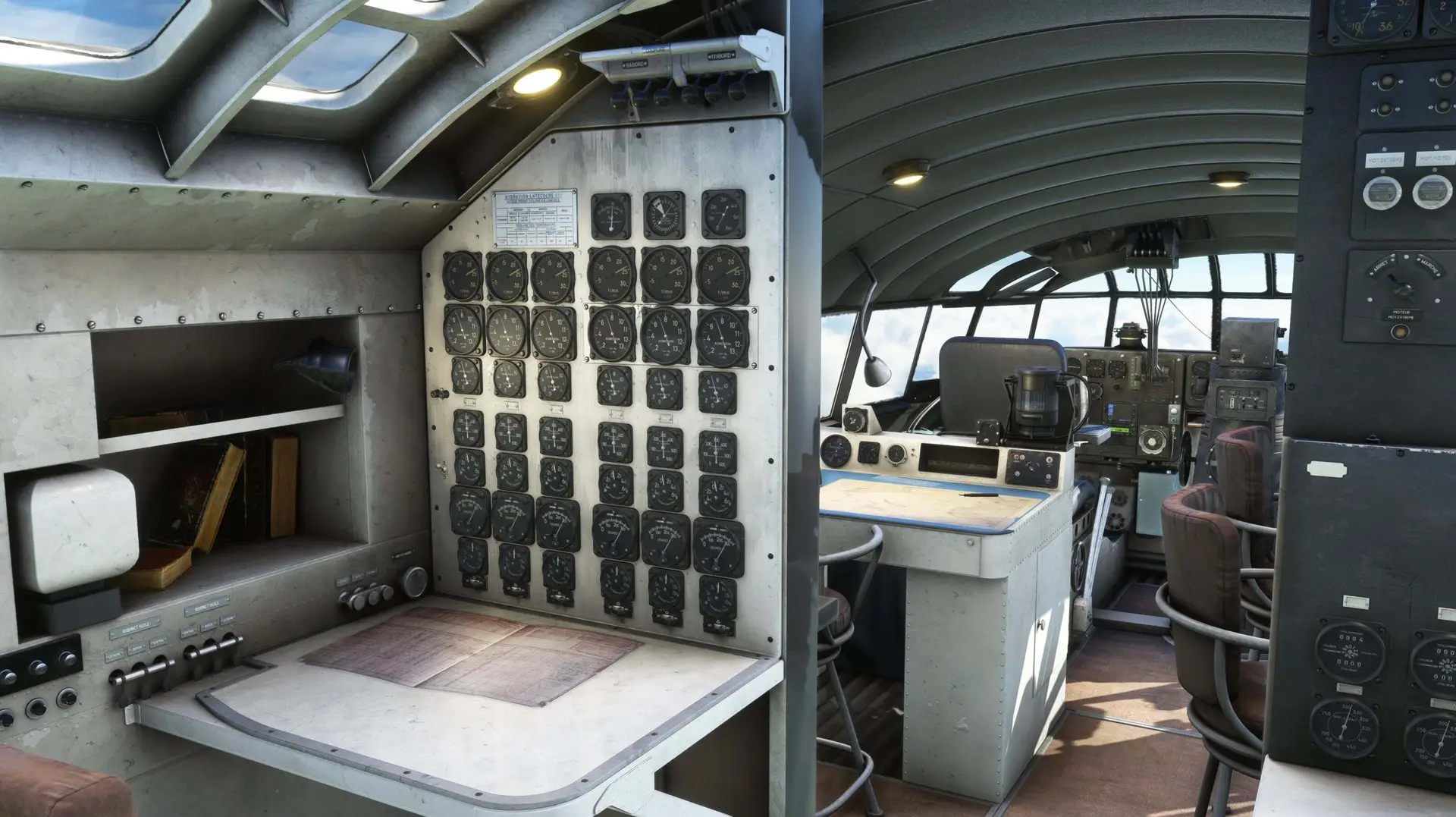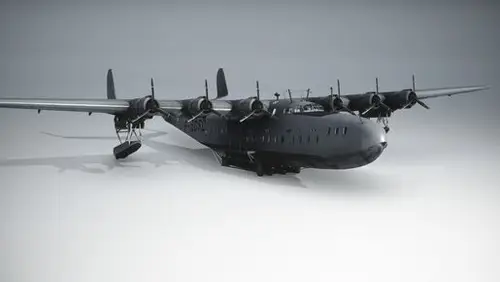The Model 631 is an all-metal, high-wing, 6-engine flying boat designed and manufactured by France’s Latécoère. A great source of French national pride, its initial development was hindered due to World War II. Latécoère persevered, however, and ultimately built 11 models, including one prototype. The large, elegantly-shaped Model 631 first took to the sky on November 4, 1942. The hydroplane’s introduction was delayed for years after its maiden flight due to German occupation, but finally debuted commercially in 1945
The Model 631 was the largest flying boat in the world for a number of years. Only the American Hughes H-4 Hercules “Spruce Goose,” which flew just once on November 2, 1947, and the British Saunders-Roe Princess, which took its maiden flight on August 22, 1952, were larger. The last of the great trans-oceanic flying boat airliners, the Model 631 flew until the mid 1950s.
Latécoère, which was established in 1917, had built a long history of successful aircraft by the mid-1930s, including a number of flying boats. The Model 631, which would be its largest (and last) hydroplane, was conceived based on a 1936 request by the French Civil Aviation Authority for an airliner that could carry 40 passengers and would have a range of at least 2,500 miles. Work began in 1938, but was halted due to World War II. The Model 631 prototype finally took to the sky on November 4, 1942 but was seized by Germany and flown to Lake Constance, where it was destroyed by a British bombing attack in April of 1944. The French, however, had hidden a second Model 631. That aircraft, the first of ten production models, flew for the first time on March 7, 1945 and demonstrated to the world that France’s aviation industry had survived the war—and was ready to soar.
The Model 631, which serviced routes in Africa, Europe, and South America, was typically crewed by five and could accommodate up to 46 passengers. It flew for ten years, until 1955. Unfortunately, many crashed, and the remains of all were scrapped.
The beautiful aircraft measured 142 feet, 7 inches in length, stood 33 feet, 2 inches above the water, and had a wingspan of 188 feet, 5 inches. Its tail unit comprised a V-shaped stabilizer with a vertical stabilizer and rudder on each end. The hydroplane was powered by six 14-cylinder Wright R-2600-C14 Cyclone radial piston engines. Each powerplant turned out up to 1,600 horsepower and swung a 3-blade, constant-speed propeller. The Model 631 had a range of 3,750 miles, cruised at 185 miles per hour, and had a top speed of 245 mph.





















